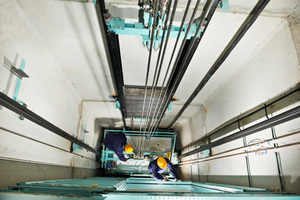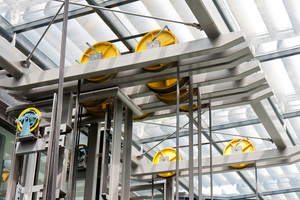

|
Edward Lowton
Editor |


|
| Home> | Production Engineering | >Fasteners, springs and adhesives | >Adhesive technology: It's on the up |
Adhesive technology: It's on the up
17 January 2014
Double-deck lifts in The Shard, London, travel skywards at 6m/sec. In common with many new lift installations across the world, the structure of the lift cars is bonded with Henkel adhesives.

From a design standpoint adhesives offer efficient stress distribution over large surface areas and those exposed to high loading. Henkel says this has a positive effect on the static and dynamic strength achieved by comparison with welding and riveting which result in localised stress peaks.
Adhesives act as sealants, preventing loss of pressure or liquids, blocking the penetration of condensation and protecting against corrosion. Additionally, they form an insulating film, to prevent contact corrosion when different types of metals are joined. They are also efficient electrical and thermal insulators.
Through the use of adhesives alone, up to 20% can be saved on the weight of a standard lift, mainly because thinner and lighter materials can be used without compromising performance. The adhesives stiffen and stabilise the assembly when used in combination with appropriate joint design. Introduction of an omega profile, for example, that is bonded to the outside face of the panel considerably enhances the strength of the structure.
- New structural bonders create limitless opportunities in maintenance and repair
- Coping with the cold
- Boosting the scope of shrink fits with engineering adhesives
- Instant health & safety adhesive
- Hazard label free adhesives
- Three categories
- Engineering adhesives, sealants and functional coatings
- Fast-curing resin
- Retaining compounds: Securing solutions
- Structural adhesives



















